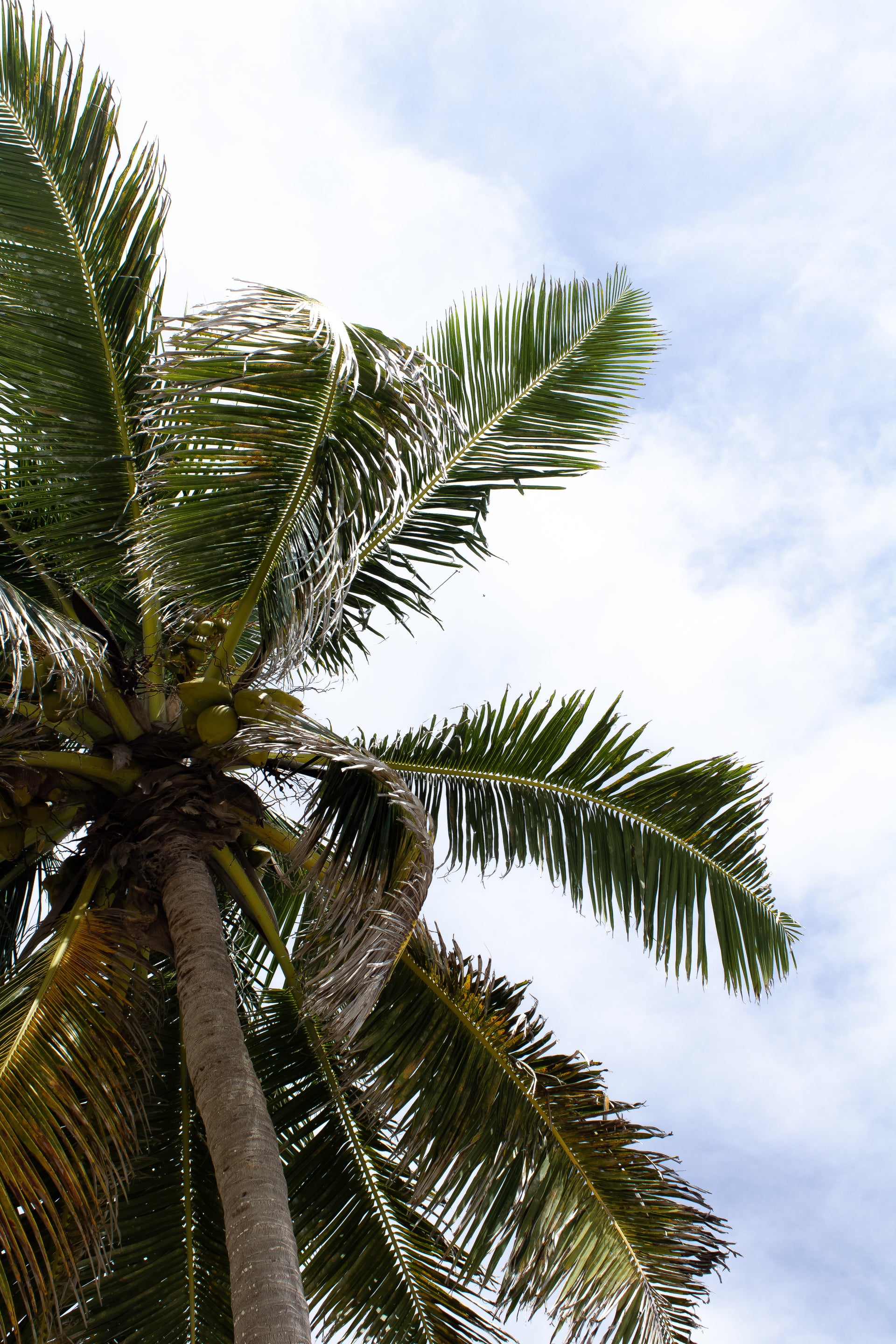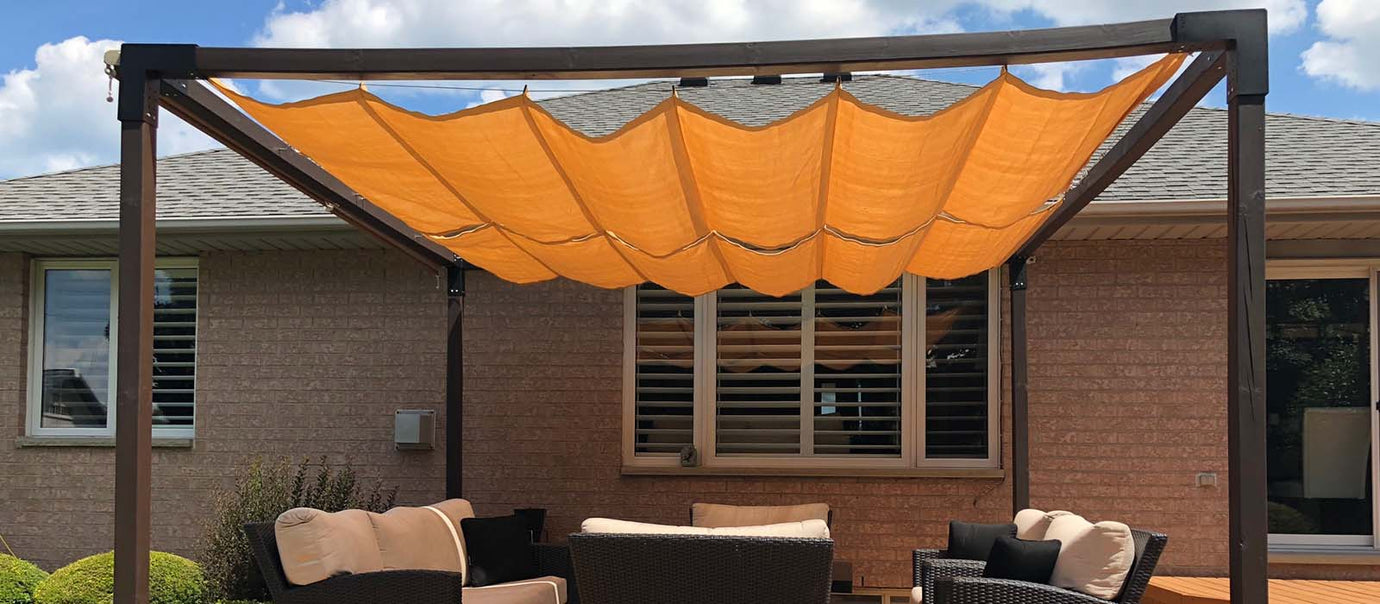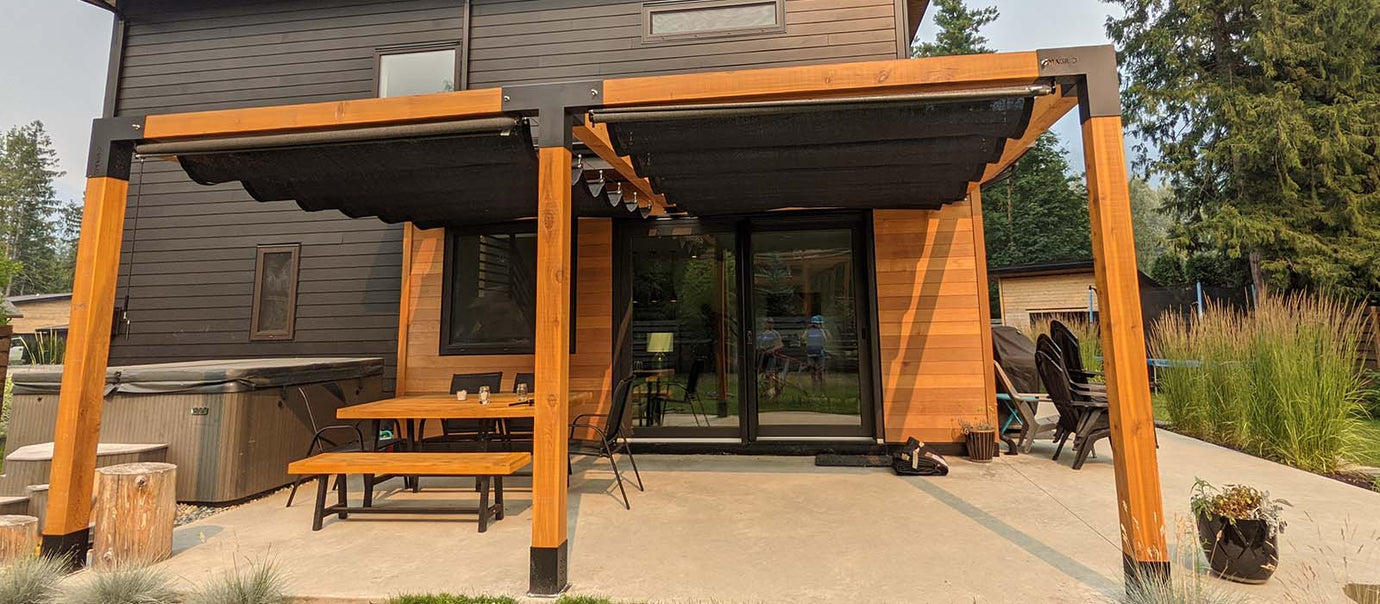Our YouTube channel includes detailed installation guides, frequently asked questions, product overviews and lots more. We are always open to content ideas so please let us know if there is a topic you would like us to cover.
How to Shade a Patio

Patios are the cornerstone of many people’s gardens and outdoor spaces. They are where we congregate for a family bbq, relax and read a book or enjoy spending some time in the sun. Ensuring your patio has sufficient shade is crucial for maximising both the use of your space and your return on investment.
In this guide, we will discuss the most important factors you should consider when shading a patio and the most common solutions including Shade Sails and Roman Shades.


Contents
- Construction Status
- Important Considerations
- The thickness of your slab
- The surrounding area
- Frames vs Spans
- Anchor Points & Posts
- Cabling
- Existing structures
- Bolting to the patio
- Installing the posts inside of the patio perimeter
- Positioning posts outside of the patio perimeter
Construction Status
Incomplete
If you are planning out your shade at the same time as planning out your patio, this will provide you with the largest amount of flexibility in your design. Primarily, it will allow you to choose the exact position of your posts, around which you will be able to build your patio.
Whether you are using a Shade Sail or a Roman Shade, having strong, sturdy posts is a must for any shade structure and planning out your shade at the same time as your patio will allow for the most optimum placement and will ensure you are not compromising on strength or aesthetics.
Complete
Having said that, the most common scenario we encounter is adding shade to an already existing patio. Pay close attention to the posts and anchor points section; there are many options that will provide you with strong anchor points without having to compromise on strength or aesthetics.
These options include attaching to an existing structure, positioning your posts outside of the patio perimeter and also using cabling to further extend the flexibility of your post-placement.

Important Considerations
Before we discuss your anchor points and the most common solutions for shading a patio, there are several things you should bear in mind that will dictate the amount of flexibility you have with your design. Whether you are planning your patio and shade from scratch or adding shade to an existing patio, these items are equally important to consider.
The thickness of your slab
Shade sails, in particular, require substantial anchor points to support the force created by tensioning fabric. If you are considering bolting your posts to your patio (covered in more detail later on), you will need to make sure that your slab is substantial enough to support a post.
This is also an important consideration if you are considering digging through your patio to install a post. With a thicker slab, it may not be possible to do this, so assessing the thickness and structural integrity of your patio is an important first step before considering what options you have for anchor points.
The surrounding area
Assessing the surrounding area is another important step that will give you the most amount of flexibility when planning your shade. In particular, look for existing structures where you might be able to position an anchor point, this can help save time and money over using a post for every anchor point.
Also, assess the area surrounding the patio for potential post positions; you will need to dig 3-4ft down in order to install a post, so ensuring you know where it is possible to dig will offer you the most amount of flexibility and will ease the planning process.


Frames vs Spans
There are two main options for shading a patio. Spanning fabric over the patio using anchor points outside of the perimeter or building a frame on top of the patio. Both of these solutions have their advantages and disadvantages, which we will discuss in this section.
Spans
Spanning fabric over your patio is the least intrusive option for your space as you typically position your posts outside of the perimeter. If you have large gatherings or children running around this can be an attractive option.
In addition, depending on your preference, shade sails are a very aesthetically pleasing solution; the options are almost limitless, for example, you can vary the heights of your anchor points and twist the fabic to create a hyperbolic shape. The main disadvantage to this option is the substantial footings required to support the force created by tensioning the fabric; if you are not able to dig the footings needed for the posts, you may need to consider using a frame.
Pergola Frames
The main advantage of using a frame is the reduction in footing requirements. Because the force of the tensioned fabric is dissipated through the horizontal beams of the frame, the footing requirements are much less and can often be accomplished by bolting to your patio, reducing the time and cost of your installation.
A framed structure also opens up the possibility for using different shade solutions such as Roman Shades, which are attractive shade products hung on two wires between two parallel surfaces such as the beams of a pergola. You can also mount shade horizontally to a pergola frame using our Privacy Panels or Pergola Panels.


Anchor Points & Posts
Once you have accessed the area and considered which solution might work best for your space, it’s time to start considering the possible anchor points. An anchor point is defined as a substantial position to which you can attach your shade product.
The most common types of anchor points are existing structures such as the side of your house or a post that you will install in the ground. We have a detailed guide discussing anchor point hardware, which can help you choose the right hardware for your space.
Cabling
Before discussing the various options for anchor point placement, bear in mind that you can use lengths of cable between your anchor points and the corner of your shade sail. For example, if you have a 10’ x 10’ shade sail but the closest possible anchor points create a 12’ span, you can use 2ft of cable to bridge this gap without having to use a larger shade sail.
This gives you much more flexibility when considering your anchor point placement and also provides endless options when considering multiple shade sails as you can use a single anchor point for multiple sails.

Existing structures
If your patio is in close proximity to your house or another existing structure, it may be possible to use this structure as an anchor point. Attaching to an existing structure is an excellent way to save time and reduce the cost of your installation.
We offer a wide range of anchor point hardware to cater to many different scenarios including flat surfaces and both inside and outside corners of adjoining walls. If, however, your patio is positioned far away from any existing structure, you will need to use posts or a frame to create your attachment points.


Bolting to the patio
If you are using a pergola frame, more than likely, you will be able to bolt this frame to the patio as opposed to using a substantial footing as you would have to for a single post.
Please bear in mind, if you are planning on bolting to your existing patio, you will not be able to span tensioned fabric to these posts; a bolted post will not provide enough support for the force created by a shade sail and there is a very high chance your post will tear off the patio with dangerous consequences. As such, only consider bolting to the patio if you are using a pergola frame.


Installing the posts inside of the patio perimeter
Most of our customers will position the posts outside of the perimeter of the patio, however, if you have a particularly large patio or want to shade a specific part of the patio and there is no other option, you can position your posts inside of the perimeter.
If you have not yet built your patio, you can install your post first and then build your patio around the post, this is the most optimum scenario but not always possible. If your patio is already constructed you will have to consider how many patio slabs to remove and what equipment you will need to dig through the slab beneath. This is one of the more complicated options and we are more than happy to discuss this with you should you require any help.


Positioning posts outside of the patio perimeter
This is by far the most common anchor point when not attaching to an existing structure. Positioning your post outside of the perimeter of your patio ensures you can enjoy the full area of your patio without having to worry about posts. This also means that your posts are completely separate from your patio, adding to the ease of installation.
As previously mentioned, you will need to dig around 3-4 feet down, so make sure the area in which you are planning to dig has good soil and is clear of any water, gas or electrical mains. If you would like help planning out the position and installation of your posts, please contact us.





